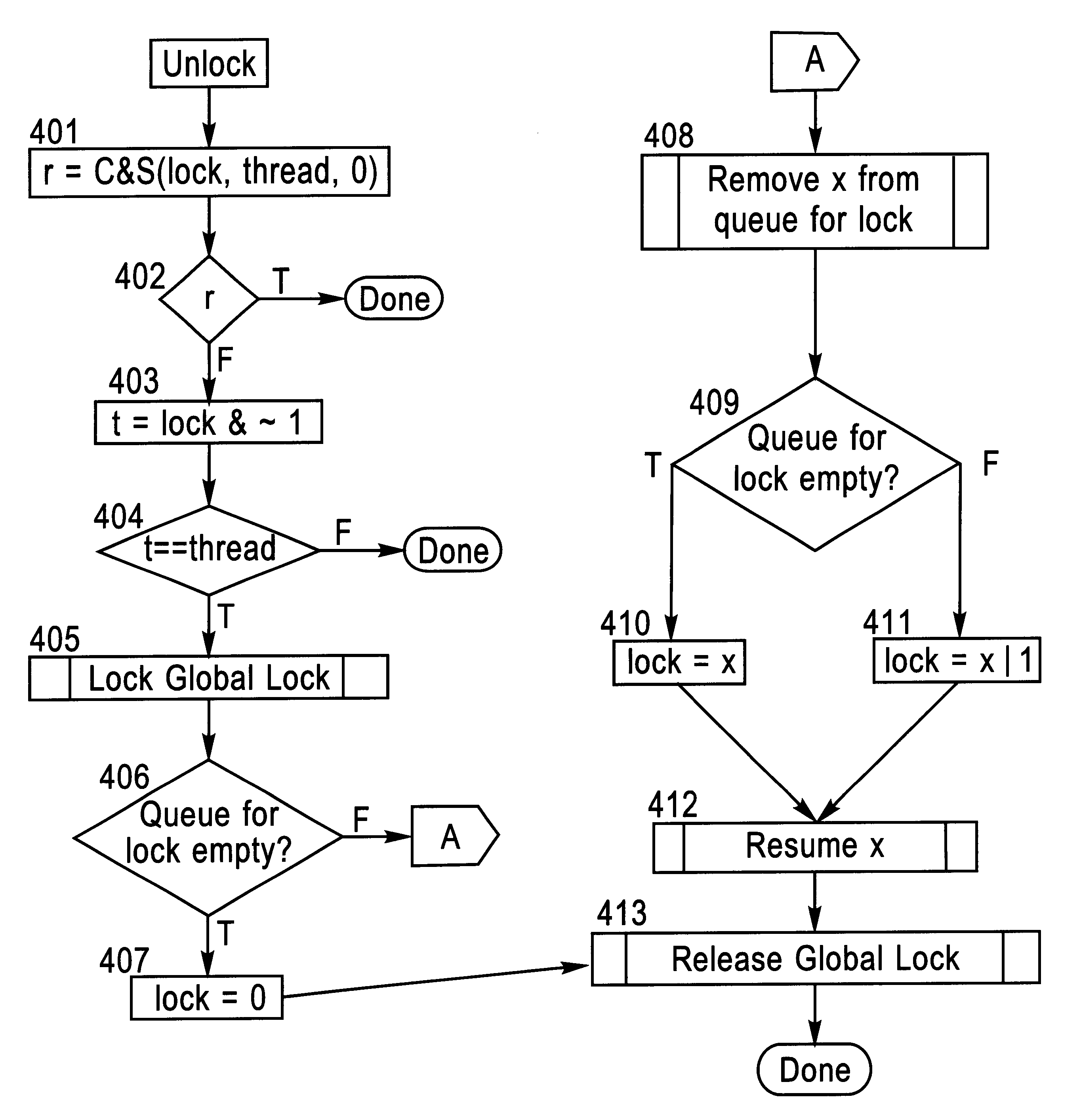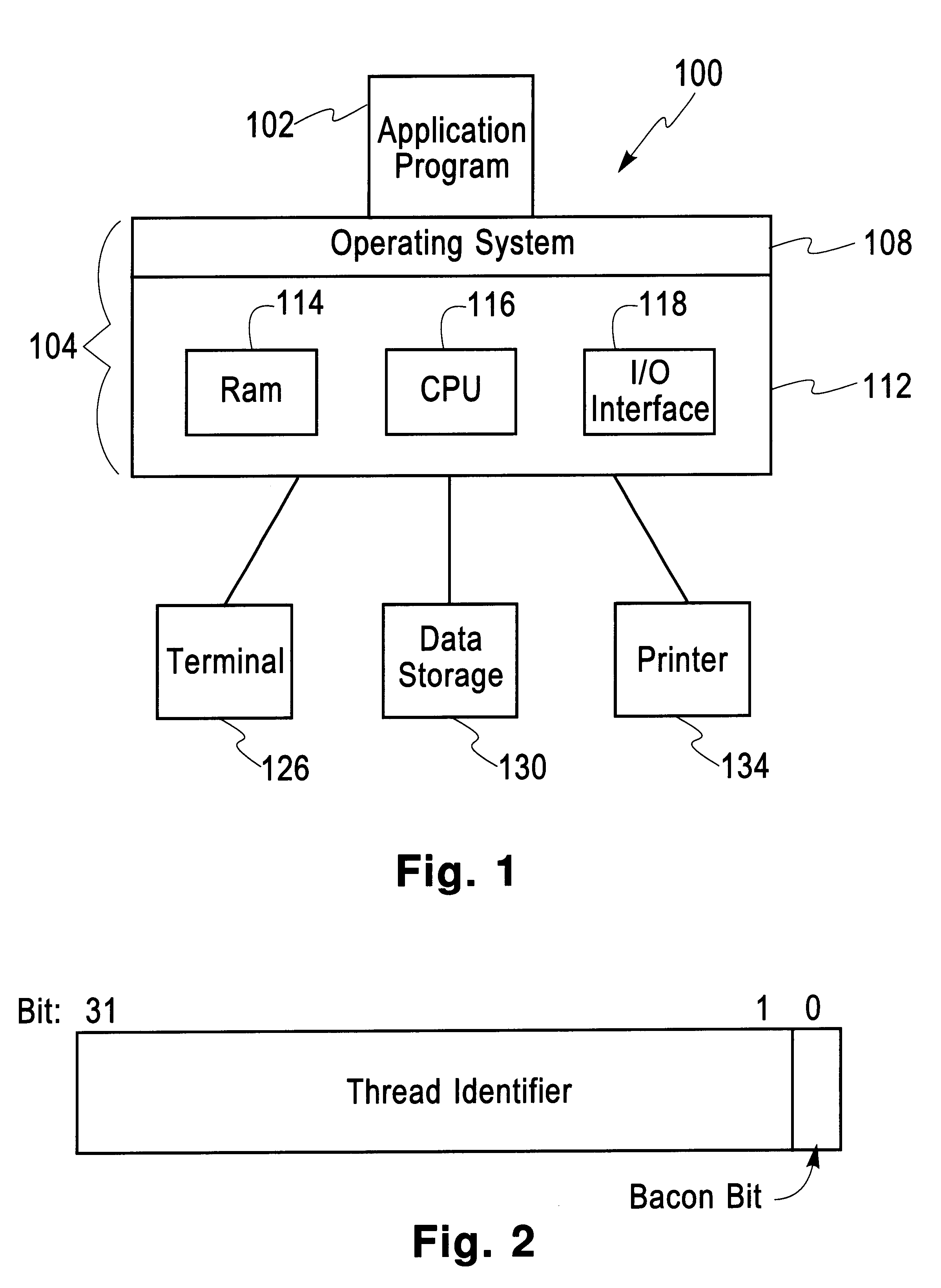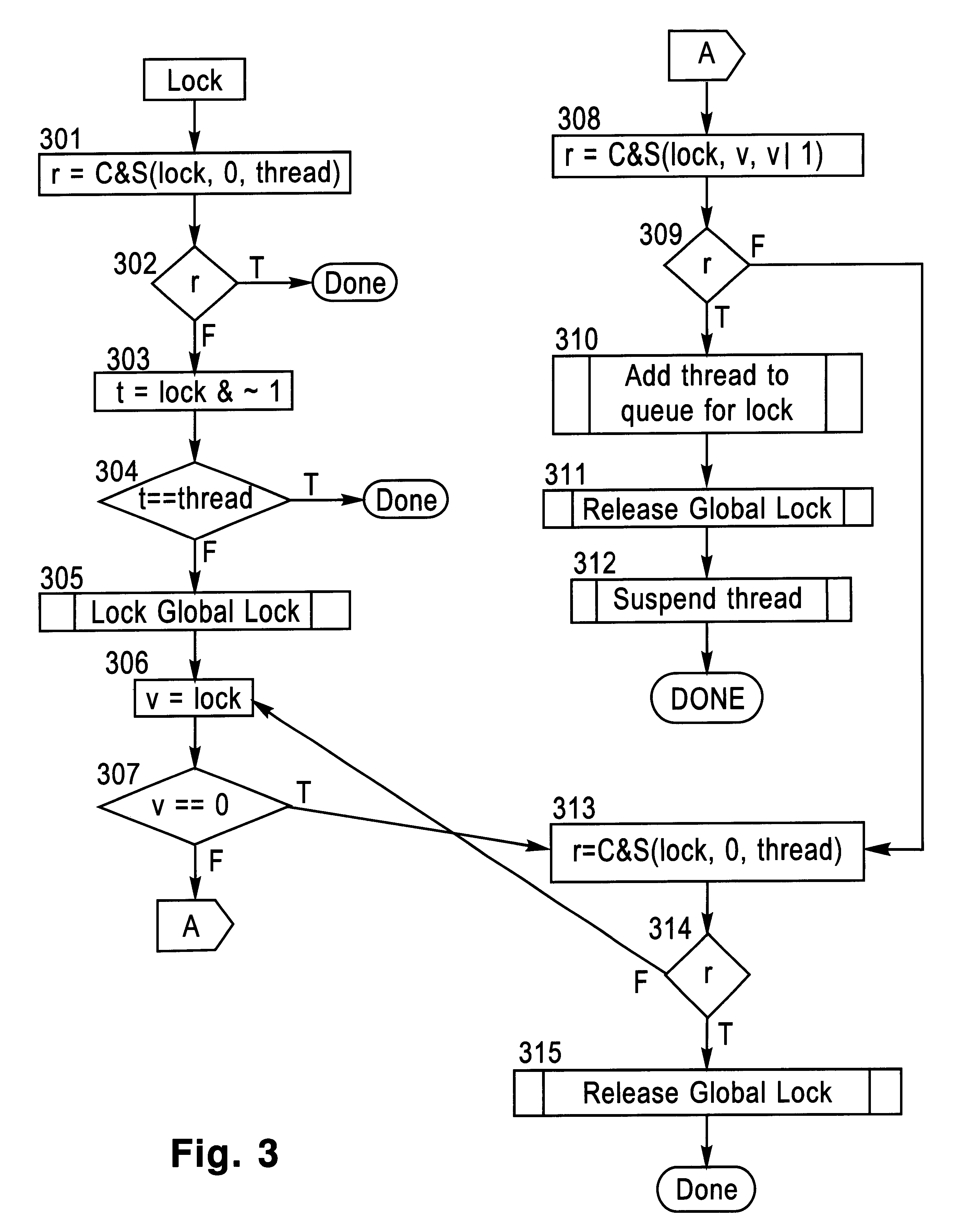Locking and unlocking mechanism for controlling concurrent access to objects
a technology of locking mechanism and object, applied in the field of locking/unlocking mechanism for controlling concurrent access to objects, can solve the problems of not performing operations on the object, controlling concurrent access to data structures, and affecting the effect of spin locking
- Summary
- Abstract
- Description
- Claims
- Application Information
AI Technical Summary
Problems solved by technology
Method used
Image
Examples
Embodiment Construction
The invention applies to all computer systems that synchronize access to shared objects via locks.
Referring to the drawings, normal rectangles such as 301 enclose code, using the operators of C++ (but omitting details such as type declarations). The CompareAndSwap operation is abbreviated C&S. Assignment is via the "=" operator; equality testing via the ".dbd." operator; bit-wise and via the "&" operator; bit-wise or via the ".vertline." operator; and unary ones-complement via the ".about." operator. Boxed rectangles such as 305 enclose abstract operations, the details of which are not specified.
Referring now to FIG. 1, there is shown a block diagram showing a computer system 100 on which a preferred embodiment of the present invention operates. The computer system 100 includes one or more application programs 102 and an operating system 108 that operate on a computer platform 104. The platform 104 includes a hardware unit 112 that includes one or more central processing units 116 (...
PUM
 Login to View More
Login to View More Abstract
Description
Claims
Application Information
 Login to View More
Login to View More - R&D
- Intellectual Property
- Life Sciences
- Materials
- Tech Scout
- Unparalleled Data Quality
- Higher Quality Content
- 60% Fewer Hallucinations
Browse by: Latest US Patents, China's latest patents, Technical Efficacy Thesaurus, Application Domain, Technology Topic, Popular Technical Reports.
© 2025 PatSnap. All rights reserved.Legal|Privacy policy|Modern Slavery Act Transparency Statement|Sitemap|About US| Contact US: help@patsnap.com



